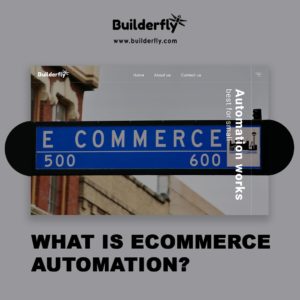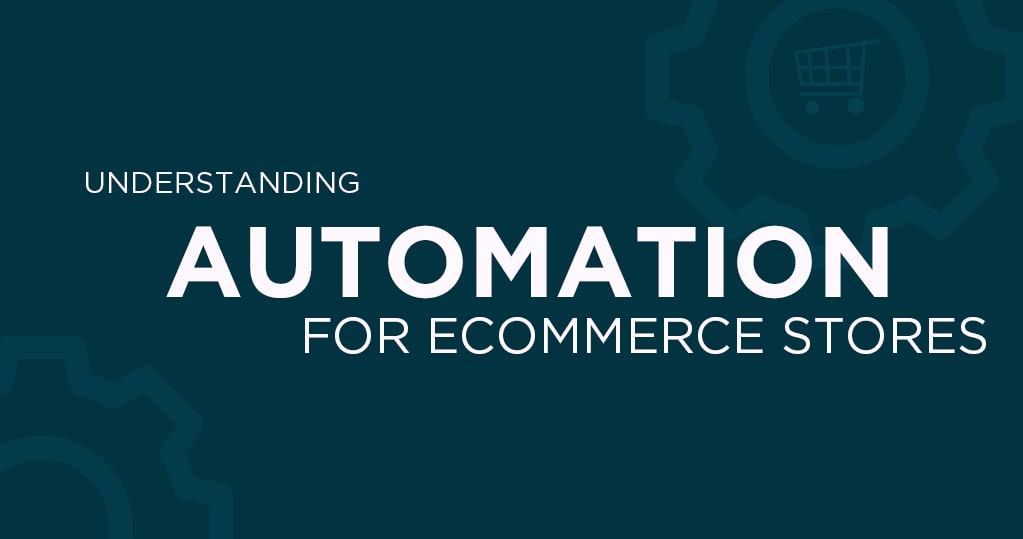It’s a wonderful feeling to see your business grow. When you have more customers, more profits, and greater success rolling in, every day is more exciting than the last. However, growth means your business will become more demanding, and you’ll find yourself busier than ever. This can present significant challenges — there are so many hours in a day, after all!
Automating your ecommerce business is the key to taking much of that weight off your shoulders. With ecommerce automation, you can streamline the repetitive or mundane parts of your business that would otherwise start to consume too much of your time.
What is Ecommerce Automation?

Ecommerce automation is the process of using software tools that will complete various tasks for you, rather than needing to do them yourself. While some aspects of the business will still require human input, a significant number of ecommerce tasks can be automated quite successfully. Automation works best for small, continuous everyday tasks that are always performed consistently.
Some good examples of ecommerce automation for online businesses are:
- New customers who create an account on your store are sent a “Welcome” email.
- New customers whose first purchase exceeds a certain dollar amount are designated “high-value” and moved to a specific Customer Group.
- Every customer is sent an email newsletter once a month, with high-value customers receiving many versions.
- Orders showing certain suspicious traits, like shipping and billing addresses that don’t match, are flagged as high-risk for review as potential fraud
- Existing customers who buy a specific item are sent an email about other suggested items that would complement their purchase.
- All customers get an email 30 days after buying to request a product review.
- When inventory numbers fall below a certain threshold, a purchase order is automatically generated for you to send to your supplier.
- Customers who leave items in their cart without completing a transaction receive email reminders as part of an abandoned cart recovery campaign.
And many more…
You can probably imagine how much time it would take for a business owner or employee to handle all these tasks manually, but since they always follow a specific procedure, it makes them perfect for automation.
How Ecommerce Automation Works
Ecommerce automation is driven by smart platforms that adjust to the actions, input, or feedback of website users. At the core of these capabilities is artificial intelligence (AI), which can mimic human actions and thought processes to a limited degree — although not nearly so limited as it was in its earlier days. Basic types of automation, such as those listed above, are performed by a simple AI with a list of criteria that triggers explicit tasks like sending an email after a pre-set time following a customer’s action.
AI is capable of more advanced tasks as well, and some AI can improve and expand upon its programming via machine learning. Machine learning is a method for improving the “intelligence” of AI by absorbing new information based on interactions with users. This enables the AI to become more efficient with time and to give visitors a more personalized experience.
For instance, machine learning can be utilized to enhance search functions in an online store by using the information given by customers when they perform searches: the keyword they look for, and the products they click on. From that information, the AI can learn which products in the search results are most likely to be relevant to the keyword that was used. These items will then be moved to the top of the search results for that keyword.
Machine learning can help a website to customize itself for individuals as well. You’ve seen this yourself every time you visit a website that shows relevant products. Those products have been chosen by an AI-based on what it has learned from you through your interactions with the website.
A customer service chatbot is another form of useful ecommerce AI that relies heavily on machine learning. Chatbots simulate a live chat with a representative of the business. Chatbots aren’t meant to duplicate a conversation with a human, but they can gather information through the customer’s chat responses and use that information in several ways. Chatbots can answer some questions and refer a visitor to the correct department based on their responses if needed. They can additionally make product recommendations and enable the customer to find what they’re searching for. Machine learning allows the chatbot to improve its automatic responses and feel more organic — and more “human” — to customers.
Benefits of ecommerce Automation
Automation provides numerous benefits to your ecommerce business because it allows you to accomplish things you otherwise wouldn’t be able to do. Some tasks can be extremely valuable to your business but just aren’t feasible to perform manually. Many such tasks involve constantly monitoring and collecting information, looking for certain parameters, and then acting upon them by following a certain procedure (e.g. sending an email, flagging orders, adding customers to specific segments). Automation provides a means for the software to handle all this data and proceed accordingly, without you needing to intervene once you’ve set it up.
The most obvious benefit to ecommerce automation is the amount of time it frees up for you. When the menial part of the workload is being handled by the software, you can focus on growing your business and engaging your customers.
Consistency and accuracy are related benefits. Since you’re letting a computer handle these tasks, you can be assured that they’ll be handled appropriately and consistently. With automation, you only need to set up the tasks according to how you want them to be performed, and then the software takes care of it for you. Contrast this to manual work, in which you’d constantly need to keep track of which procedures to follow and when always with the possibility of human error.
Ecommerce automation enables you to run your business more professionally while simplifying some of the burdens. You’ll be able to give your time where it actually matters, and provide the human touch where it’s required.
How Can You Automate Your ecommerce Operation?

Automation ought to be the future of commerce. Unfortunately, making your own in-house systems or engineering your own connections between tools and your platform needs a lot of work. Automation ought to be simple. To accomplish that, Flow follows a trigger, if-else situations, and action logic designed through an easy-to-use visual builder. Workflows can be developed and deployed in a couple of minutes, or you can use pre-made workflow templates, without writing a single line of code.
Since it was introduced in 2017, more than 3,500 businesses have made automation to work. Even more impressive are the big numbers behind those businesses: 1.1 billion workflows — e.g., decisions offloaded — each one decreasing a process that utilized to be manually operated. Overall, that amounts to 9.2 million hours in time saved.
One of the Home furnishings retailers has prepared some active workflows across three different Builderfly storefronts, incorporating one to track commissions from their in-store associates at 5 brick-and-mortar locations.
It’s additionally created flows to …
- Manage their reordering and inventory processes
- Optimize their refund reports saving them thousands of hours every year
- Automate employee discounts
- Publish and unpublish products due to availability, returns, and warehouse movements
Where Does Ecommerce Automation Work Best?
In any organization, there are thousands if not millions of small tasks that take between 1 to 4 minutes to execute. Individually, they never seem to be a vital time-waster. Together, however, they increase productivity. Automation simplifies these tasks and lets you experiment.
The following are a sampling of where ecommerce automation works best:
- Preload new products and publish them to your online store, social media, and sales channels at the same time
- Tag high-value customers and send personalized welcome messages
- Schedule sales — i.e., promotions and price changes — for pre-decided periods
- Send an email or slack message to your marketing team so they can pause promotions
- Modify prices at checkout based on product quantity, combinations, or customer location
- Display and hide payment options relative to customer criteria like location, order history, and device
- Identify, tag, and divide customers who purchase from particular sales channels, such as Facebook, Pinterest, Amazon, and more
- Apply explicit shipping rules to consumers with email addresses or tags like “Loyalty Member”
- Rollout and rollback entire theme changes for seasonal product drops or promotions
Automating tasks like these wins energy, back time, and thousands in expenses. Moreover, it encourages your teams to do their best work: creative endeavors, product iteration, experimentation, sales and marketing, and personal development.
Conclusion
So, now that you understand the possibilities and power offered by ecommerce automation, you might already have many ideas for utilizing it in your own business. If you have an online store with Builderfly, you’re lucky — you already have access to all the automation tools we’ve discussed.








